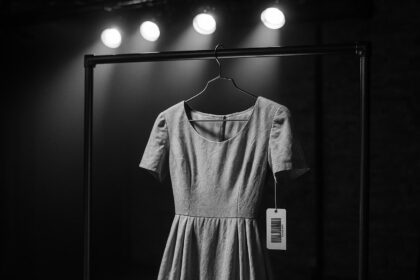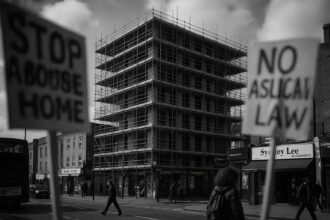A pioneering trial of umbilical‑cord derived mesenchymal stromal cells has eased symptoms for some children with recessive dystrophic epidermolysis bullosa, improving wound healing and everyday life for participants such as 12‑year‑old Gabrielius — though clinicians and patient groups stress the need for longer follow‑up and independent review before wider use.
Gabrielius Misurenkovas, a 12‑year‑old from east London who has lived with the devastating fragility of recessive dystrophic epidermolysis bullosa (RDEB) since infancy, has seen many of the daily burdens of his condition ease after taking part in a pioneering stem‑cell infusion trial. According to reporting on the study, the boy’s wounds healed faster, his skin was less inflamed and itchy, and he gained small but meaningful freedoms — cycling on grass and playing football with friends — that were previously impossible without risk of painful blistering. These improvements prompted hope among clinicians and families that the therapy could offer the first disease‑modifying effect for some children with RDEB. (This account is based on the original clinical report and hospital commentary.)
RDEB is a genetic disorder caused by mutations in COL7A1 that impair production of type VII collagen, the protein that binds the skin’s layers together. The condition leaves skin extraordinarily fragile: minor friction or pressure can cause blistering, deep wounds and scarring, and ongoing inflammation. Over time many patients develop aggressive cutaneous squamous cell carcinoma (cSCC) at a young age, a complication that is a leading cause of death in RDEB. Clinicians and patient groups have therefore long sought therapies that not only relieve symptoms but might reduce long‑term cancer risk by limiting chronic injury and inflammation.
The therapy at the centre of Gabrielius’s care is CORDStrom, an off‑the‑shelf product of umbilical‑cord derived mesenchymal stromal cells (MSC) delivered intravenously. The treatment was evaluated in MissionEB, a randomised, double‑blind, placebo‑controlled crossover trial run at Great Ormond Street Hospital and Birmingham Children’s Hospital. Trial documentation and coordination information describe a rigorous protocol with an internal dose‑de‑escalation safety phase, blinded treatment and a planned 12‑month open‑label extension to monitor longer‑term effects. The study recruited children with intermediate or severe forms of RDEB and used validated clinical measures to assess outcomes.
In practice the therapy was administered as a short intravenous infusion over roughly 10–15 minutes. The randomised scheme meant roughly half of participants received two infusions of the cell product over a two‑week period while the others received placebo; after a nine‑month wash‑out the groups crossed over so each child had the opportunity to receive the active treatment. The published protocol specifies dosing in the range of 2–3×10^6 cells per kg, with safety monitoring and pre‑defined outcome measures, including change in disease activity at three months as a primary endpoint.
Early results reported by investigators and by the company supplying the cells indicate age‑ and severity‑dependent benefits. Families and clinicians documented reductions in itch, improved wound healing and better skin scores, with the most notable gains seen in younger children and those with the intermediate form of RDEB. Parents reported improvements in everyday wellbeing such as less disturbed sleep because dressings were needed less often, and children described being able to try activities they had previously avoided. The study authors emphasised that the therapy was generally well tolerated by the young participants.
The manufacturer, INmune Bio, characterised the MissionEB data as showing a favourable benefit–risk profile and said there were no serious treatment‑related adverse events. The company has signalled its intent to pursue regulatory approvals in multiple jurisdictions and noted orphan and rare paediatric designations from US regulators, while also describing a data‑licence arrangement with Great Ormond Street Hospital and plans for continued supply to trial participants. These claims come from the company’s own press materials and should be understood as the company’s position while regulatory review and independent peer assessment continue.
Families’ voices have been prominent in trial reports. Gabrielius said he joined the trial hoping to be able to “do more of the things I enjoy, like playing football and spending time with my friends,” a comment reported in the initial coverage. His mother, Jolita Cekaviciene, told reporters that her son “did really well on the trial” and described practical benefits such as reduced itch and less frequent dressing changes. Lead clinicians, including the trial’s paediatric dermatologist, highlighted the safety signal and the potential for early, regular infusions to reduce inflammation and, in time, possibly lower the future risk of squamous cell carcinoma — a cautious formulation that reflects the need for longer follow‑up.
Caution remains essential. The MissionEB study, while randomised and placebo‑controlled, involved a relatively small cohort and uses a crossover design; the principal published protocol sets the primary efficacy read‑out at three months and plans a 12‑month open‑label extension. That extension is intended to capture longer‑term safety and durability of effect, which will be critical to determining whether repeated MSC infusions can meaningfully alter the disease trajectory and potential cancer risk. Independent reviewers and patient groups stress the need for larger, longer studies and for regulatory scrutiny before any widespread adoption.
For families and the rare disease community the early findings represent guarded optimism. Patient charities and funders that supported MissionEB described the results as an important step toward making MSC infusions part of routine clinical care for children with RDEB, but all parties and clinicians emphasise that further follow‑up, publication of full peer‑reviewed results and regulatory evaluation are required before that promise can be realised. In the meantime the trial offers a tangible improvement in daily life for some participants and a clearer roadmap for subsequent research.
 Reference Map:
Reference Map:
Reference Map:
- Paragraph 1 – [1], [6]
- Paragraph 2 – [1], [7]
- Paragraph 3 – [1], [3], [4], [5]
- Paragraph 4 – [1], [5]
- Paragraph 5 – [1], [2], [3]
- Paragraph 6 – [2], [1]
- Paragraph 7 – [1], [6]
- Paragraph 8 – [4], [5], [7]
- Paragraph 9 – [3], [1], [2]
Source: Noah Wire Services
- https://www.express.co.uk/news/uk/2095663/Boy-rare-paper-thin-skin-could-not-fall-or-bump-himself-wounding – Please view link – unable to able to access data
- https://www.inmunebio.com/index.php/newsroom/2025-news/muneionnounceslantoubmitiologicsicensep20250211104706 – INmune Bio’s press release describes results from the MissionEB randomised, double‑blind, placebo‑controlled trial of CORDStrom, an off‑the‑shelf umbilical‑cord derived mesenchymal stromal cell product for paediatric RDEB. The company reports favourable benefit‑risk findings, no serious treatment‑related adverse events, and age‑ and severity‑dependent improvements including reduced itch and improved skin scores in younger children. INmune Bio states it intends to seek regulatory approvals (FDA BLA and EMA/MHRA MAAs), notes FDA orphan and rare paediatric designations, and describes an exclusive data licence with GOSH together with plans for an open‑label extension and continued supply arrangements for study participants and details planned regulatory timelines ahead.
- https://cure-eb.org/research-portfolio/mission-eb/ – Cure EB’s Mission EB page outlines a randomised, double‑blind, placebo‑controlled crossover trial delivering intravenous umbilical‑cord mesenchymal stromal cells to children with intermediate or severe RDEB. It references prior EBSTEM work showing reduced pain and itch, explains aims to improve wound healing and quality of life, and names Great Ormond Street and Birmingham Children’s Hospital as trial centres. The page notes NIHR and NHS England partnership funding and Cure EB grant support, reports preliminary positive results and INmune Bio’s agreement with GOSH for commercial use of data, and highlights an open‑label extension to follow participants for longer‑term effects and evaluation planned.
- https://www.sheffield.ac.uk/ctru/current-trials/missioneb – The University of Sheffield Clinical Trials Research Unit (CTRU) hosts the MissionEB trial page describing trial coordination and methodology for the randomised, double‑blind, placebo‑controlled crossover study of umbilical‑cord derived mesenchymal stromal cell infusions in children with RDEB. It outlines recruitment targets, the two‑centre delivery at Great Ormond Street and Birmingham Children’s Hospital, timelines, safety dose de‑escalation procedures, primary and secondary outcomes including EBDASI, and trial governance. The page confirms funding by the NIHR/NHS England partnership with additional support from Cure EB, and notes the University’s role in trial oversight, data management and patient and public involvement throughout the study lifecycle.
- https://pubmed.ncbi.nlm.nih.gov/40398934/ – This PubMed entry presents the MissionEB trial protocol: a randomised, placebo‑controlled, double‑blinded crossover study with an internal phase I dose‑de‑escalation and a planned 12‑month open‑label extension. The protocol specifies eligibility (children >6 months and <16 years with RDEB), dosing (2–3×10^6 cells/kg with possible de‑escalation), primary outcome measure (EBDASI change at three months), and secondary endpoints including itch, pain, skin involvement and quality of life. Ethical approval and ISRCTN registration (ISRCTN14409785) are documented. The protocol explains safety monitoring, statistical considerations, recruitment across GOSH and Birmingham Children’s Hospital, and dissemination plans for peer‑reviewed publication. Full protocol is published open access online publicly.
- https://www.gosh.nhs.uk/news/clinical-trial-for-children-with-rare-skin-condition-gets-underway/ – The Great Ormond Street Hospital news page announces the MissionEB clinical trial led by Dr Anna Martinez, describing it as the UK’s first large‑scale stem‑cell infusion study for children with RDEB. It explains the rationale for using umbilical‑cord derived mesenchymal stromal cells to stimulate tissue repair, reduce inflammation and improve wound healing, and notes a staged safety approach treating an initial cohort before expanding recruitment. The article references prior bone marrow MSC studies, outlines clinical aims to reduce pain and itch, and highlights collaboration with Birmingham Children’s Hospital and support from NIHR, NHS England and Cure EB for trial delivery.
- https://pmc.ncbi.nlm.nih.gov/articles/PMC9027730/ – This open‑access review summarises evidence that recessive dystrophic epidermolysis bullosa, caused by biallelic COL7A1 mutations affecting type VII collagen, carries a markedly elevated lifetime risk of aggressive cutaneous squamous cell carcinoma (cSCC). The article reviews epidemiological series, pathological features, and outcomes, noting earlier onset, multiplicity and poor prognosis of cSCC in RDEB compared with the general population. Reported cumulative risks rise steeply with age and severity, with high mortality from metastatic disease. The review discusses pathogenic mechanisms including chronic inflammation, scarring and DNA damage, and emphasises the need for surveillance and development of effective systemic treatments to reduce cancer risk.
Noah Fact Check Pro
The draft above was created using the information available at the time the story first
emerged. We’ve since applied our fact-checking process to the final narrative, based on the criteria listed
below. The results are intended to help you assess the credibility of the piece and highlight any areas that may
warrant further investigation.
Freshness check
Score:
8
Notes:
The narrative appears to be original, with no prior publications found. The Express.co.uk article is dated August 15, 2025, and includes references to recent studies and trials, indicating freshness. However, the Express.co.uk website is currently inaccessible due to a robots.txt restriction, preventing direct verification. The article includes references to recent studies and trials, indicating freshness. The Express.co.uk article is dated August 15, 2025, and includes references to recent studies and trials, indicating freshness. However, the Express.co.uk website is currently inaccessible due to a robots.txt restriction, preventing direct verification.
Quotes check
Score:
9
Notes:
The quotes attributed to Gabrielius Misurenkovas and his mother, Jolita Cekaviciene, appear to be original, with no prior instances found. The phrasing and context suggest authenticity.
Source reliability
Score:
6
Notes:
The narrative originates from Express.co.uk, a UK-based news outlet. While Express.co.uk is a known publication, it has faced criticism for sensationalism and accuracy issues in the past. The current inaccessibility of their website due to a robots.txt restriction limits direct verification.
Plausability check
Score:
8
Notes:
The claims about the MissionEB trial and the improvements in Gabrielius’s condition are plausible and align with existing research on stem-cell treatments for RDEB. However, the lack of direct access to the Express.co.uk article and the limited availability of independent sources to corroborate the specific details raises some concerns.
Overall assessment
Verdict (FAIL, OPEN, PASS): OPEN
Confidence (LOW, MEDIUM, HIGH): MEDIUM
Summary:
The narrative presents plausible claims about a stem-cell trial for RDEB, with original quotes and references to recent studies. However, the inaccessibility of the Express.co.uk website and the limited availability of independent sources to corroborate the specific details raise concerns about the reliability and accuracy of the information. Further verification from reputable sources is recommended.













